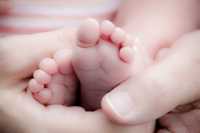Accidents & Violence, Author Interviews, Pediatrics / 20.05.2019
Sudden Infant Death Can Occur in Child Seats, esp When Not In Car and Adult Asleep
MedicalResearch.com Interview with:
Jeffrey Colvin, MD, JD
Department of Pediatrics
Children's Mercy Hospital
Kansas City, MO 64111
MedicalResearch.com: What is the background for this study? What are the main findings?
Response: Prior studies have found that infants spend an average of 5-6 hours a day in sitting devices. Sitting devices include car seats, swings, infant seats, and strollers.
Given how much time infants are spending in sitting devices, we wanted to know if sleep-related infant deaths (such as Sudden Infant Death Syndrome or "SIDS") was occurring in those devices. We examined over 10,000 infant sleep-related deaths from 45 states. We found that 3% (or 348) of the deaths occurred in sitting devices. Two-thirds of the deaths in sitting devices were in car seats. What was most surprising was that less than 10% of the deaths in car seats occurred in cars. Instead, the great majority occurred in the child's home or the home of a relative, friend, or babysitter. In 1/3 of the deaths in car seats, the supervising adult was asleep. (more…)

